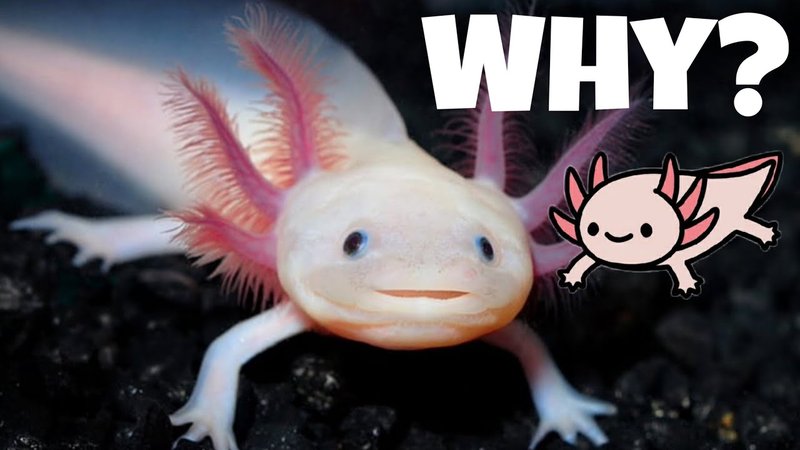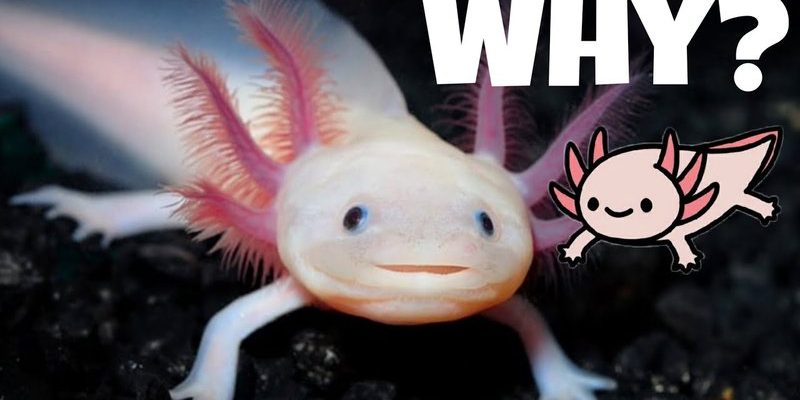
Let’s dive into this intriguing question over a cup of coffee. While the axolotl is primarily a gentle and harmless creature, there are aspects of its biology and habitat that could cause concern. So, let’s explore whether axolotls are truly safe or if there are any hidden dangers lurking beneath their charming exterior.
What Is an Axolotl?
The axolotl, scientifically known as *Ambystoma mexicanum*, is an aquatic salamander that has a few quirks distinguishing it from other amphibians. One major feature is its ability to remain in its larval form throughout its life, a phenomenon known as neoteny. This means that instead of going through the typical metamorphosis like frogs, axolotls keep their gills and live underwater. Imagine being like a child forever—that’s kind of the case for these fascinating creatures!
Native to the lakes of Mexico, particularly Lake Xochimilco, axolotls are now critically endangered due to habitat loss and pollution. Their delightful appearance and unique biological traits have made them popular in the pet trade as well. However, owning an axolotl requires responsibility, and it’s essential to understand their needs for a healthy and safe environment.
The Myth of Axolotl Danger
You might be thinking, “Can something that looks so cute ever be dangerous?” Honestly, most people would agree that axolotls aren’t a threat. *But*, there are a few considerations to keep in mind. For starters, axolotls do have sharp teeth, but they’re not the kind that will bite you. Instead, these teeth are more suited for grasping and holding prey like worms and small fish. If you’re handling an axolotl, a gentle touch is key.
In terms of toxicity, axolotls do not possess any potent venom that could harm humans. However, they are susceptible to bacterial infections if not kept in a clean environment. This is where the danger lies—not from the axolotl itself, but from the diseases that can spread in overcrowded or unclean conditions. Always ensure you’re providing a healthy habitat to help keep both you and your pet safe.
Allergies and Sensitivities
Another area to consider is allergies or sensitivities. While it’s quite rare, some people might have an allergic reaction to axolotls or their environment. If you’re bringing one into your home, pay attention to any unusual sniffles or skin irritation after handling them.
If allergies are a concern, consider regular cleaning of their tank and surrounding area to minimize any potential triggers. Also, be cautious when introducing new plants or materials into the tank, as they can harbor allergens or irritants that might affect you or the axolotl.
Handling an Axolotl Safely
If you decide to interact with your axolotl, it’s crucial to do so safely. Here are a few simple tips to help avoid any potential mishaps:
- Wet your hands: Always wet your hands before handling an axolotl. Their skin is delicate and can absorb oils and dirt from your fingers.
- Gentle touch: Use a light grip when lifting. They are surprisingly slippery, and a firm hold could cause them stress or injury.
- Avoid sudden movements: Quick actions can startle the axolotl, putting it at risk of injury or even shock.
By following these guidelines, you can ensure a positive experience for both you and your pet axolotl.
Health Concerns for Axolotls
Just as you need to maintain a clean environment for your axolotl, these creatures can also experience health issues that might indirectly affect you. One common concern is a fungal or bacterial infection, which can quickly spread through the water.
If you notice your axolotl isn’t eating, has discolored skin, or is acting lethargically, it could be a sign of illness. Regular water changes and monitoring water quality can help prevent these issues. Make sure you’re cycling the water properly and maintaining the right temperature and pH levels.
In addition, keeping an eye on the tank’s cleanliness will not only keep your axolotl healthy but also create a safer space for you.
Axolotls and Their Environment
Axolotls thrive in very specific aquatic environments—typically cool, fresh waters with plenty of hiding spots. If you’re thinking about keeping one as a pet, remember that their habitat should be as stress-free as possible. A well-maintained tank can help prevent health issues for your axolotl and minimize any risk to you.
Using a quality water filtration system is essential here. Not only does it keep the water clean, but it also reduces the need for frequent water changes. Regularly testing the water for ammonia, nitrite, and nitrate levels can help you maintain a stable habitat.
Here’s the thing: poorer water quality can lead to stress in axolotls, which might cause them to behave erratically. In extreme situations, that could lead to risks for anyone nearby, especially if those in the household aren’t taking proper precautions.
Are Axolotls Safe as Pets?
In summary, keeping an axolotl as a pet can be a delightful and educational experience. They are generally safe and pose minimal danger to humans when handled responsibly. Remember, their primary needs revolve around a clean and stable environment. This keeps both you and your axolotl happy and healthy.
If you’re intrigued by the idea of having a pet that can regenerate limbs and has cute features, the axolotl might just be perfect for you. Just be sure to do your research and prepare adequately. After all, caring for any living creature requires commitment and understanding!
Overall, axolotls are fascinating little beings that can bring joy and wonder to your life. With proper care and consideration, you can enjoy the company of these unique pets without any worries about danger to yourself or them.

